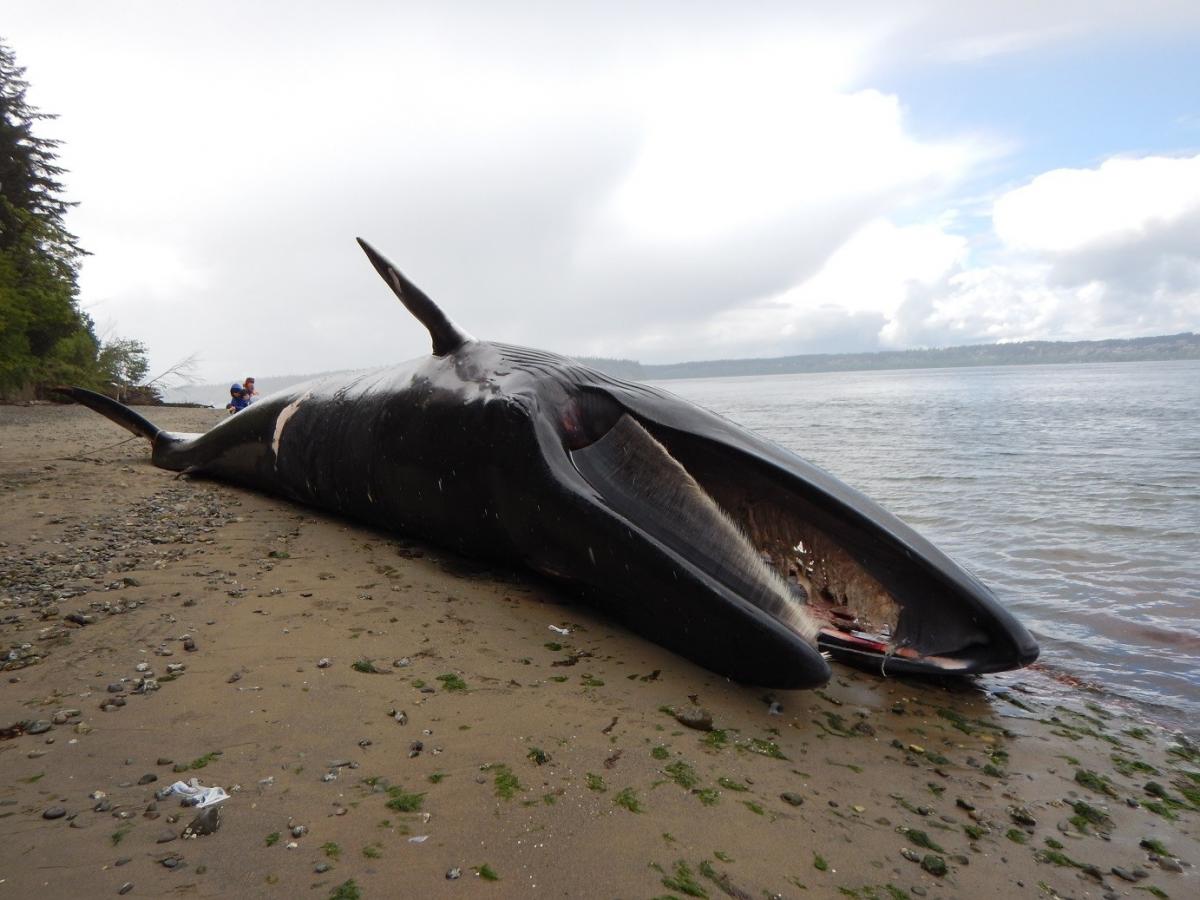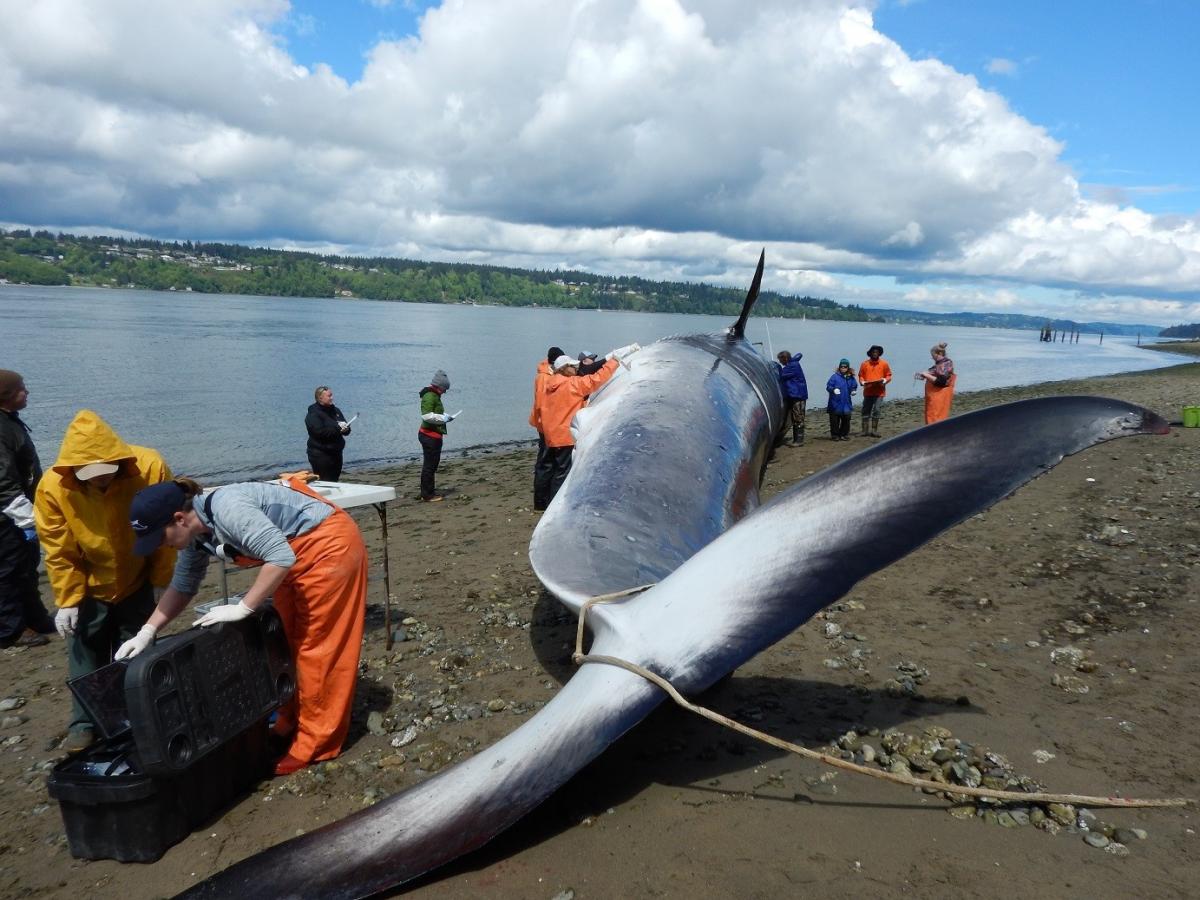The examination of a fin whale conducted on 13 May revealed it was a young juvenile male struck by the ship while apparently feeding and appeared otherwise healthy. On the morning of 12 May, a shipping vessel reported a whale that had dislodged from their bow as they came into the Tacoma area. The 52-foot juvenile male whale is believed to have been struck near the entrance to the Strait of Juan de Fuca. Washington Department of Fish and Wildlife (WDFW) biologists responded and identified the whale as a fin whale and coordinated with NOAA, the agency that oversees marine mammal stranding response. It was towed by the Department of Natural Resources (with support from Bandito Charters) to a site for examination. The necropsy was conducted on 13 May by biologists from Cascadia Research (CRC), WDFW, and SR3, with the assistance of the MaST Center and two University of Washington researchers. This whale was in good body condition, with oily blubber and a good amount of subcutaneous fat, and had been recently feeding on a large quantity of krill based on both stomach and intestinal contents and some remains found in the baleen. There was a significant amount of hemorrhage along the mid-back, which was determined to be the point of impact of the ship clearly while the whale was still alive.
Multiple samples were taken from for a variety of analyses, including histopathology, genetics, contaminants, biotoxins, parasitology, life history, and other diagnostic studies. These samples will be sent to a number of different laboratories and institutions in the coming weeks and months and will contribute valuable information to ongoing marine mammal studies and may provide additional insight into these stranding events.
Fin whales are an endangered species which are still recovering from commercial whaling and appear to be especially susceptible to vessel collisions–this whale represents the 12th fin whale to have stranded in Washington since 2002, and 10 of these had evidence of pre-mortem blunt force trauma attributed to being struck by large ships. They are the 2nd largest of all the whales, only slightly smaller than the blue whale.
Events in recent weeks have highlighted some of the continued threats to whales in our region. This is the 3rd whale stranding in our region in the last 10 days (two gray whales were recently found dead including a calf that died after becoming entangled in crab gear and was recovered off the southern Washington coast). Another gray whale was struck by a boat a few weeks ago off Everett, Washington but has been determined to be in apparent good health based on an assessment on 13 May by Cascadia and SR3.
Photos below show early stages of the examination of the fin whale (Photos © 2017 Cascadia Research).

